
The Enchanting Great Barrier Reef
Discover the Great Barrier Reef: A Marine Paradise with Crystal-clear Waters, Vibrant Corals, and Diverse Marine Life, Perfect for Snorkeling, Diving, and Scenic Flights.
The Great Barrier Reef in Australia is the world's largest coral reef system, stretching over 2,300 kilometers. This natural wonder is composed of nearly 3,000 individual reefs and 900 islands, offering breathtaking underwater landscapes and vibrant marine life. Snorkeling and diving in the Great Barrier Reef are unparalleled experiences. Visitors can witness an array of colorful corals, tropical fish, and other marine creatures. Some popular spots include the Whitsunday Islands and Cairns, both known for their crystal-clear waters and rich biodiversity. Aside from underwater activities, the Great Barrier Reef offers many other attractions. You can take a scenic flight over the reef to appreciate its size and beauty from above. Boat trips and glass-bottom boat tours are also excellent ways to explore the reef without getting wet. For those interested in marine biology, many educational tours and research stations provide insights into the reef's ecosystem and conservation efforts.
Local tips in Great Barrier Reef
- Visit during the dry season (May to October) for the best weather and visibility.
- Book snorkeling and diving tours in advance, especially during peak season.
- Use reef-safe sunscreen to protect the coral ecosystem.
- Consider staying in Cairns or the Whitsunday Islands for easy access to the reef.
- Bring an underwater camera to capture the stunning marine life.
- Respect the reef by not touching the corals and marine life.
The Enchanting Great Barrier Reef
The Great Barrier Reef in Australia is the world's largest coral reef system, stretching over 2,300 kilometers. This natural wonder is composed of nearly 3,000 individual reefs and 900 islands, offering breathtaking underwater landscapes and vibrant marine life. Snorkeling and diving in the Great Barrier Reef are unparalleled experiences. Visitors can witness an array of colorful corals, tropical fish, and other marine creatures. Some popular spots include the Whitsunday Islands and Cairns, both known for their crystal-clear waters and rich biodiversity. Aside from underwater activities, the Great Barrier Reef offers many other attractions. You can take a scenic flight over the reef to appreciate its size and beauty from above. Boat trips and glass-bottom boat tours are also excellent ways to explore the reef without getting wet. For those interested in marine biology, many educational tours and research stations provide insights into the reef's ecosystem and conservation efforts.
When is the best time to go to Great Barrier Reef?
Iconic landmarks you can’t miss
Great Barrier Reef Marine Park
Discover the unparalleled beauty and diversity of the Great Barrier Reef Marine Park, a UNESCO World Heritage site that showcases nature's aquatic wonders.

Barrière de corail
Experience the breathtaking beauty of the Barrier Reef at Fitzroy Island, where adventure and nature come together in a tropical paradise.

Unmissable attractions to see
Rex Lookout
Discover the stunning views of the Coral Sea at Rex Lookout, a must-visit scenic spot along Queensland's Captain Cook Highway.

Fitzroy Island National Park
Explore the breathtaking Fitzroy Island National Park, a treasure trove of natural beauty, diverse wildlife, and thrilling outdoor adventures.

Reef World - Cruise Whitsundays
Explore the vibrant marine life and stunning coral reefs at Reef World, a top tourist attraction in Queensland's beautiful Whitsundays.
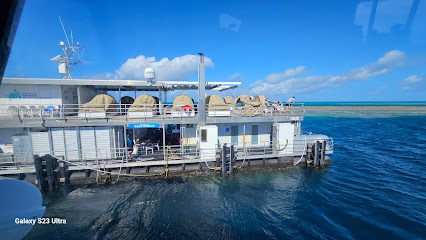
Sunlover Reef Cruises Pontoon - Moore Reef
Discover the vibrant marine life and stunning coral formations at Moore Reef, a must-visit destination in the Great Barrier Reef.

1770 Reef - Great Barrier Reef Eco Tours
Discover the vibrant underwater world at 1770 Reef - a gateway to the Great Barrier Reef with eco-friendly tours and unforgettable marine adventures.

Playground Dive Site (Normans Reef, Great Barrier Reef)
Discover the underwater wonders of Playground Dive Site at Norman Reef, a premier diving location in the Great Barrier Reef teeming with marine life.

Lizard Island National Park
Discover the unparalleled beauty of Lizard Island National Park, a tropical paradise for snorkeling, hiking, and enjoying nature's serenity.

Reef Magic Pontoon
Discover the vibrant marine life and stunning beauty of the Great Barrier Reef at Reef Magic Pontoon, a premier destination for aquatic adventures and relaxation.

Seawalker Green Island
Explore the vibrant underwater world and pristine beauty of Seawalker Green Island, a must-visit tourist attraction in Queensland, Australia.

Heart Reef
Discover the enchanting Heart Reef, a stunning natural formation in the Great Barrier Reef, where romance and natural beauty converge.

Great Adventures Reef Pontoon
Discover the breathtaking beauty of the Great Barrier Reef at Great Adventures Reef Pontoon, where adventure meets relaxation in a stunning marine paradise.

Green Island
Experience the natural beauty of Green Island, a tropical paradise in Queensland known for its coral reefs, rainforests, and serene beaches.

Troppos - Dive site at Norman Reef
Discover the stunning underwater beauty of Troppos at Norman Reef, a premier dive site in the Great Barrier Reef, perfect for adventurers and nature lovers.

Snorkeling
Discover the vibrant underwater world of Green Island with world-class snorkeling, just a stone's throw from the Great Barrier Reef.
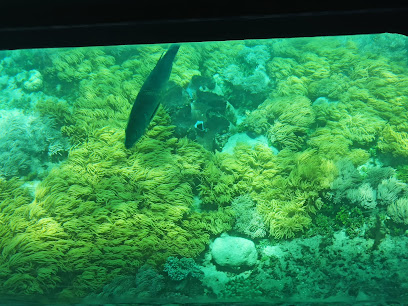
Coral Greenhouse & Ocean Sentinels / MOUA / Museum of Underwater Art
Explore the Coral Greenhouse & Ocean Sentinels, an underwater museum blending art and marine life at John Brewer Reef, Townsville's breathtaking attraction.

Essential places to dine
Foxy's Bar & Restaurant Fitzroy Island
Discover tropical flavors at Foxy's Bar & Restaurant on Fitzroy Island – where stunning views meet delightful cuisine.

Zephyr Restaurant
Experience tropical dining at its finest at Zephyr Restaurant on Fitzroy Island—where every meal comes with breathtaking views.

Amici Trattoria
Discover authentic Italian cuisine at Amici Trattoria in Whitsundays - where every meal is a celebration of flavor and hospitality.

Bam Bam at Intercontinental Hayman Island
Experience exceptional dining at Bam Bam on Hayman Island with fresh local ingredients and stunning views of the Great Barrier Reef.

Emerald Restaurant
Discover Emerald Restaurant on Green Island - where exquisite flavors meet breathtaking views in Australia's tropical paradise.
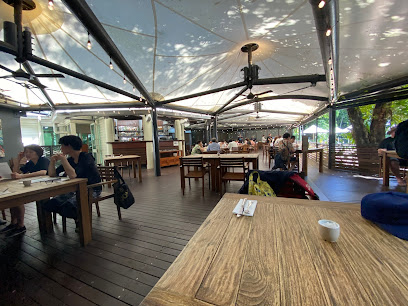
Pacific Restaurant
Experience exquisite dining with breathtaking views at Pacific Restaurant on Hayman Island in Queensland's stunning Whitsundays.

Green Island Pool & restaurant
Discover tropical bliss at Green Island Pool & Restaurant - where fast food meets paradise in Queensland's stunning landscapes.

Aqua Restaurant at Intercontinental Hayman Island
Discover exquisite dining at Aqua Restaurant on Hayman Island, where local flavors meet stunning ocean views in an unforgettable culinary experience.
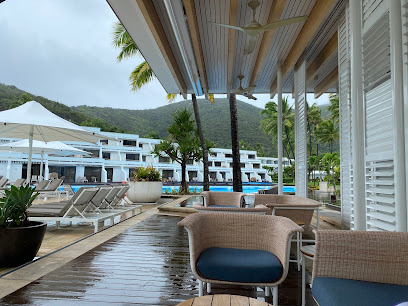
Markets, malls and hidden boutiques
The Pier, Cairns
Explore The Pier, Cairns: an eclectic shopping mall with waterfront dining and vibrant local culture.

Port Village Shopping Centre
Explore Port Village Shopping Centre in Port Douglas for unique shopping, delightful dining, and a vibrant atmosphere perfect for tourists.

Oceana Walk Arcade
Discover unique boutiques and local treasures at Oceana Walk Arcade, Cairns' vibrant shopping destination.

Palm Cove Shopping Village
Explore boutique shops and delightful cafes at Palm Cove Shopping Village, your perfect shopping getaway in the heart of paradise.

The Book Lounge
Discover a world of literature at The Book Lounge, Port Douglas' premier destination for book lovers and literary enthusiasts.

Marineland Melanesia - Crocodile Habitat & Gift Shop
Discover Marineland Melanesia, a captivating blend of wildlife encounters and unique shopping experiences on Green Island, Australia.

OK Gift Shop
Discover the unique charm of Cairns at OK Gift Shop, your go-to destination for authentic Australian souvenirs and gifts.

Bransfords Fishing and Archery
Discover Bransfords Fishing and Archery in Clifton Beach, Queensland - Your ultimate destination for fishing gear, archery supplies, and delicious fish & chips.
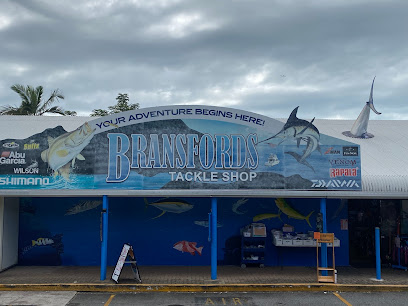
Eggplant & Poppy
Discover unique gifts and local treasures at Eggplant & Poppy, a must-visit gift shop in the heart of Cairns, Queensland.

Discover 1770 Holiday Shop
Discover unique gifts, local treasures, and dive gear at Discover 1770 Holiday Shop in Agnes Water, Queensland - a shopper's paradise.

So Unforgettable Jewellery
Explore exquisite jewelry and unique gifts at So Unforgettable Jewellery, a Cairns City gem for tourists seeking timeless elegance and local craftsmanship.

Heart Reef
Experience the breathtaking beauty of Heart Reef, a stunning coral formation in the Great Barrier Reef, perfect for snorkeling and scenic flights.

Makin' Whoopee Gift Shop
Explore Makin' Whoopee Gift Shop in Cairns for unique Australian treasures, handcrafted gifts, and a delightful shopping experience.

The Nicnak Shed
Explore The Nicnak Shed in Port Douglas for an unforgettable shopping experience filled with vintage treasures and unique local finds.

I Love Cairns - Australian Souvenir & Gift Store
Shop at I Love Cairns for unique Australian souvenirs and beach clothing, celebrating the vibrant spirit of Australia.
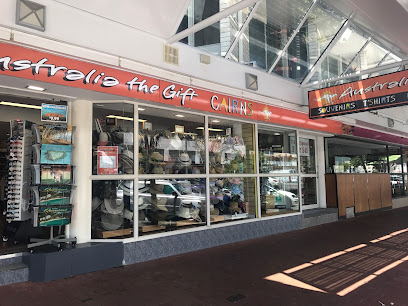
Essential bars & hidden hideouts
Salt House
Experience exquisite modern Australian cuisine and vibrant nightlife at Salt House, a scenic bar and restaurant by the marina in Cairns City.

Cock & Bull
Discover Cock & Bull, a vibrant pub and steakhouse in Cairns, offering delicious meals and a lively atmosphere for all visitors.

Rattle n Hum Cairns
Discover the perfect blend of flavors at Rattle n Hum Cairns, where great food, craft beers, and vibrant atmosphere meet by the Esplanade.
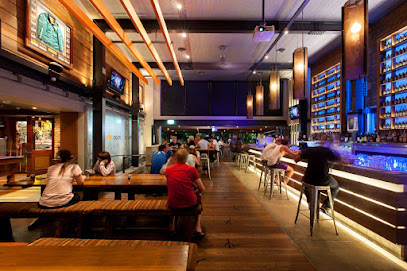
The Pier Bar
Experience the perfect blend of delicious food, refreshing cocktails, and live music at The Pier Bar in Cairns City.

The Court House Hotel
Experience the vibrant atmosphere and delicious local cuisine at The Court House Hotel, a must-visit pub and restaurant in Port Douglas.

IronBar
Experience the vibrant dining atmosphere at IronBar, Port Douglas's top bar and restaurant, where live music meets delicious cuisine.

Hemingway's Brewery FNQ
Experience the best of craft beer and exquisite dining at Hemingway's Brewery FNQ, where every sip and bite celebrates the beauty of Port Douglas.

Rocco by Crystalbrook
Experience the vibrant atmosphere and stunning views at Rocco by Crystalbrook, a premier cocktail and wine bar in Cairns.

Barbados Port Douglas
Experience the vibrant atmosphere and exquisite flavors at Barbados Port Douglas, where cocktails and tapas meet stunning marina views.

Jimmy Rum's Mixing Lounge
Unwind at Jimmy Rum's Mixing Lounge in Port Douglas, where innovative cocktails and a lively atmosphere await you.
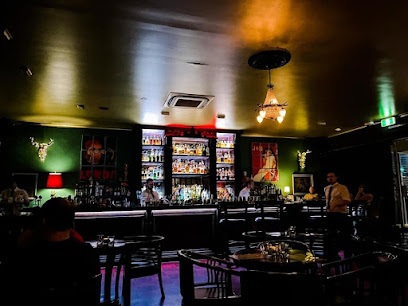
Flamingos Tiki Bar
Experience the ultimate tropical escape at Flamingos Tiki Bar in Cairns, where vibrant cocktails and a lively atmosphere await.

Foxy's Bar Fitzroy Island
Discover the ultimate beachside relaxation at Foxy's Bar Fitzroy Island, where refreshing drinks and delicious food meet stunning ocean views.
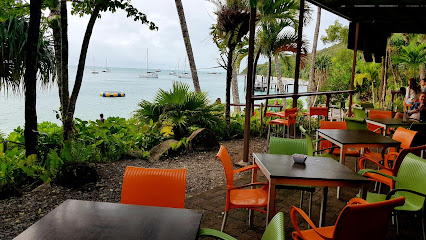
The Conservatory Bar
Experience the vibrant atmosphere and exquisite drink selection at The Conservatory Bar in Cairns City, your ultimate tropical escape.

Coral Sea Brewing Company
Discover the vibrant atmosphere and exquisite local brews at Coral Sea Brewing Company – Cairns' premier destination for craft beer lovers.

Barrier Reef Tavern
Experience the vibrant atmosphere and delicious cuisine at Barrier Reef Tavern, a local favorite pub in the heart of Port Douglas, Queensland.

Local Phrases about Great Barrier Reef
-
- HelloG'day
[G'day] - GoodbyeSee ya
[See ya] - YesYeah
[Yeah] - NoNah
[Nah] - Please/You're welcomeNo worries
[No worries] - Thank youCheers
[Cheers] - Excuse me/SorrySorry mate
[Sorry mate] - How are you?How ya goin'?
[How ya goin'?] - Fine. And you?Good. You?
[Good. You?] - Do you speak English?Ya speak English?
[Ya speak English?] - I don't understandI'm lost mate
[I'm lost mate]
- HelloG'day
-
- I'd like to see the menu, pleaseCan I check the menu, mate?
[Can I check the menu, mate?] - I don't eat meatI'm veggo
[I'm veggo] - Cheers!Cheers!
[Cheers!] - I would like to pay, pleaseI'll pay now, thanks
[I'll pay now, thanks]
- I'd like to see the menu, pleaseCan I check the menu, mate?
-
- Help!Help!
[Help!] - Go away!Bugger off!
[Bugger off!] - Call the Police!Ring the cops!
[Ring the cops!] - Call a doctor!Get a doc!
[Get a doc!] - I'm lostLost me way
[Lost me way] - I'm illFeeling crook
[Feeling crook]
- Help!Help!
-
- I'd like to buy...I wanna buy...
[I wanna buy...] - I'm just lookingJust browsing, mate
[Just browsing, mate] - How much is it?How much?
[How much?] - That's too expensiveToo pricey, mate
[Too pricey, mate] - Can you lower the price?Any chance for a discount?
[Any chance for a discount?]
- I'd like to buy...I wanna buy...
-
- What time is it?What's the time?
[What's the time?] - It's one o'clockIt's one
[It's one] - Half past (10)Half ten
[Half ten] - MorningMornin'
[Mornin'] - AfternoonArvo
[Arvo] - EveningEvenin'
[Evenin'] - YesterdayYesty
[Yesty] - TodayToday
[Today] - TomorrowTomorra
[Tomorra] - 1One
[One] - 2Two
[Two] - 3Three
[Three] - 4Four
[Four] - 5Five
[Five] - 6Six
[Six] - 7Seven
[Seven] - 8Eight
[Eight] - 9Nine
[Nine] - 10Ten
[Ten]
- What time is it?What's the time?
-
- Where's a/the...?Where's the...?
[Where's the...?] - What's the address?What's the addy?
[What's the addy?] - Can you show me (on the map)?Can ya show me (on the map)?
[Can ya show me (on the map)?] - When's the next (bus)?When's the next (bus)?
[When's the next (bus)?] - A ticket (to ....)A ticket (to ....)
[A ticket (to ....)]
- Where's a/the...?Where's the...?
History of Great Barrier Reef
-
The Great Barrier Reef began forming around 20 million years ago. It is a complex ecosystem that has evolved over millennia, comprising approximately 2,900 individual reefs and 900 islands stretching over 2,300 kilometers. The reef is primarily composed of coral polyps that have calcified into limestone structures, creating an underwater habitat that supports diverse marine life.
-
Indigenous Australian communities have had a profound connection to the Great Barrier Reef for over 60,000 years. The traditional owners of the reef, including groups like the Wulgurukaba, Yirrganydji, and Kuku Yalanji, have rich cultural, spiritual, and economic ties to the reef. Their knowledge and practices, such as sustainable fishing and reef management, have contributed to the preservation of this natural wonder.
-
In 1770, Captain James Cook's HMS Endeavour ran aground on the Great Barrier Reef near what is now Cooktown. This event marked the first recorded European contact with the reef. The crew spent weeks repairing the ship, which provided them an opportunity to document the reef’s biodiversity. This incident significantly contributed to Western knowledge of the Great Barrier Reef.
-
The Great Barrier Reef Marine Park Authority (GBRMPA) was established in 1975 to protect the reef from human impact. The park spans 344,400 square kilometers and encompasses a wide range of marine habitats. Its creation marked a significant step in marine conservation, implementing measures to regulate activities like fishing, tourism, and shipping in order to preserve the reef's ecological integrity.
-
In 1981, the Great Barrier Reef was inscribed on UNESCO's World Heritage List in recognition of its outstanding universal value. The listing acknowledges the reef's exceptional beauty, significant biodiversity, and its importance as a global scientific resource. This status has helped to draw international attention and foster global efforts to protect and conserve the reef.
-
In recent decades, the Great Barrier Reef has faced numerous threats, including coral bleaching due to climate change, pollution, and overfishing. Major bleaching events in 1998, 2002, 2016, and 2017 have severely affected the reef's health. In response, various conservation efforts have been initiated, such as the Reef 2050 Plan, which aims to improve water quality, control fishing practices, and enhance reef resilience.
Great Barrier Reef Essentials
-
The Great Barrier Reef is located off the coast of Queensland, Australia. The nearest major airports are Cairns Airport (CNS) and Hamilton Island Airport (HTI). From these airports, you can take a boat or a seaplane to reach various parts of the reef. Cairns is a major gateway, with numerous tour operators offering trips to the reef. You can also reach the reef from other coastal towns like Port Douglas and Airlie Beach.
-
Transportation options to explore the Great Barrier Reef include boat tours, catamarans, and seaplanes. Local ferries and water taxis are also available for shorter trips. On the mainland, car rentals, buses, and taxis are common modes of transport. Some areas of the reef are accessible by helicopter for a bird’s-eye view. Booking tours in advance is recommended, especially during peak season.
-
The official currency of Australia is the Australian Dollar (AUD). Credit and debit cards are widely accepted, including in hotels, restaurants, and shops. ATMs are available in major towns, but it's advisable to carry some cash when venturing to remote areas. Currency exchange services are available at airports and in cities like Cairns.
-
The Great Barrier Reef is generally safe for tourists. However, it is essential to be cautious of marine life, including jellyfish, sharks, and coral. Always follow the advice of tour operators and lifeguards. Avoid swimming alone and take precautions against sunburn and dehydration. There are no specific high-crime areas targeting tourists, but standard safety measures should be taken, such as securing valuables and being aware of your surroundings.
-
In case of emergency, dial 000 for police, ambulance, or fire services. For medical emergencies, there are hospitals and clinics in major towns like Cairns and Townsville. It is advisable to have travel insurance that covers medical emergencies. Tour operators often provide safety briefings and emergency equipment. For minor injuries, first aid kits are available on most boats and tour facilities.
-
Fashion: Do wear light, breathable clothing and sun protection. Don’t forget reef-safe sunscreen. Religion: Do respect Aboriginal cultural sites and traditions. Public Transport: Do be punctual for tours and transport schedules. Don’t litter, especially in marine environments. Greetings: Do greet people with a smile and a friendly 'hello'. Eating & Drinking: Do try local seafood and specialties. Don’t forget to stay hydrated.
-
To experience the Great Barrier Reef like a local, consider visiting some lesser-known islands and reefs that are less crowded. Engage with local guides to learn about the marine ecosystem and conservation efforts. Snorkeling and diving early in the morning can offer the best visibility and fewer crowds. Don't miss the opportunity to visit the Daintree Rainforest, which is nearby and offers a unique complementary experience to the reef.
Nearby Cities to Great Barrier Reef
-
Things To Do in Airlie Beach
-
Things To Do in Cairns
-
Things To Do in Port Douglas
-
Things To Do in Alotau
-
Things To Do in Port Moresby
-
Things To Do in Noosa
-
Things To Do in Brisbane
-
Things To Do in Surfers Paradise
-
Things To Do in Gold Coast
-
Things To Do in Lae
-
Things To Do in Byron Bay
-
Things To Do in Goroka
-
Things To Do in Buka
-
Things To Do in Mount Hagen
-
Things To Do in Kimbe












